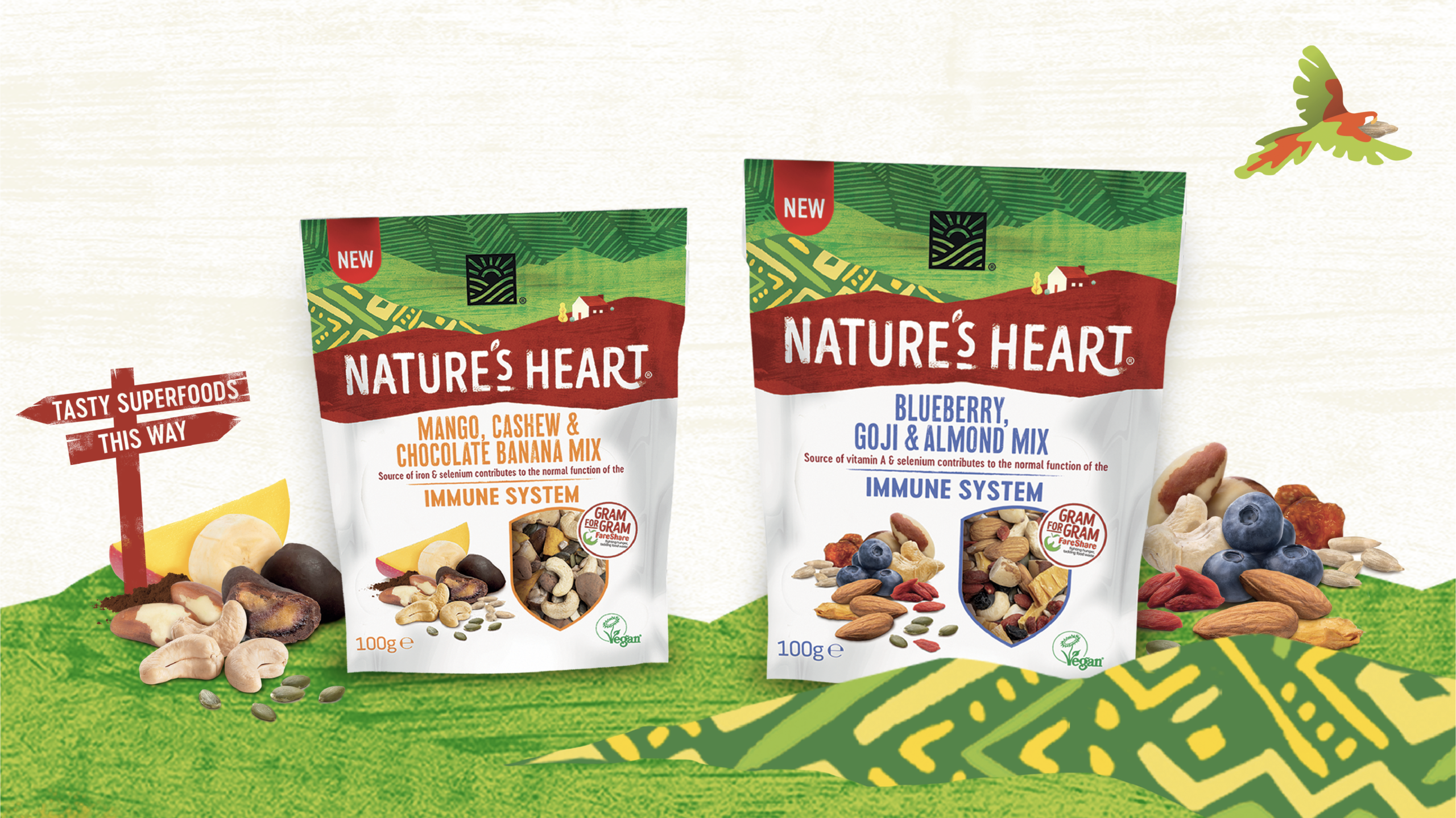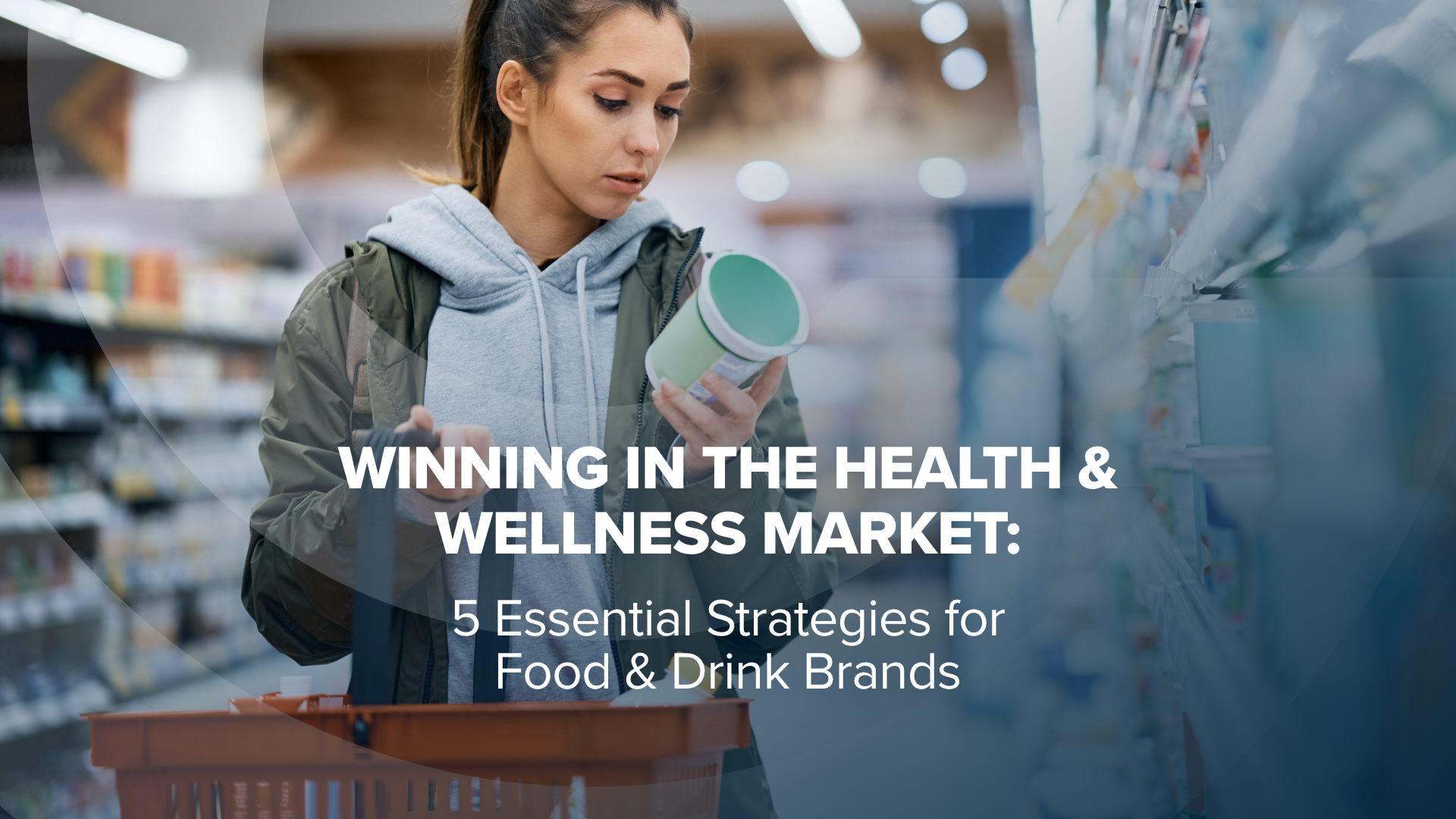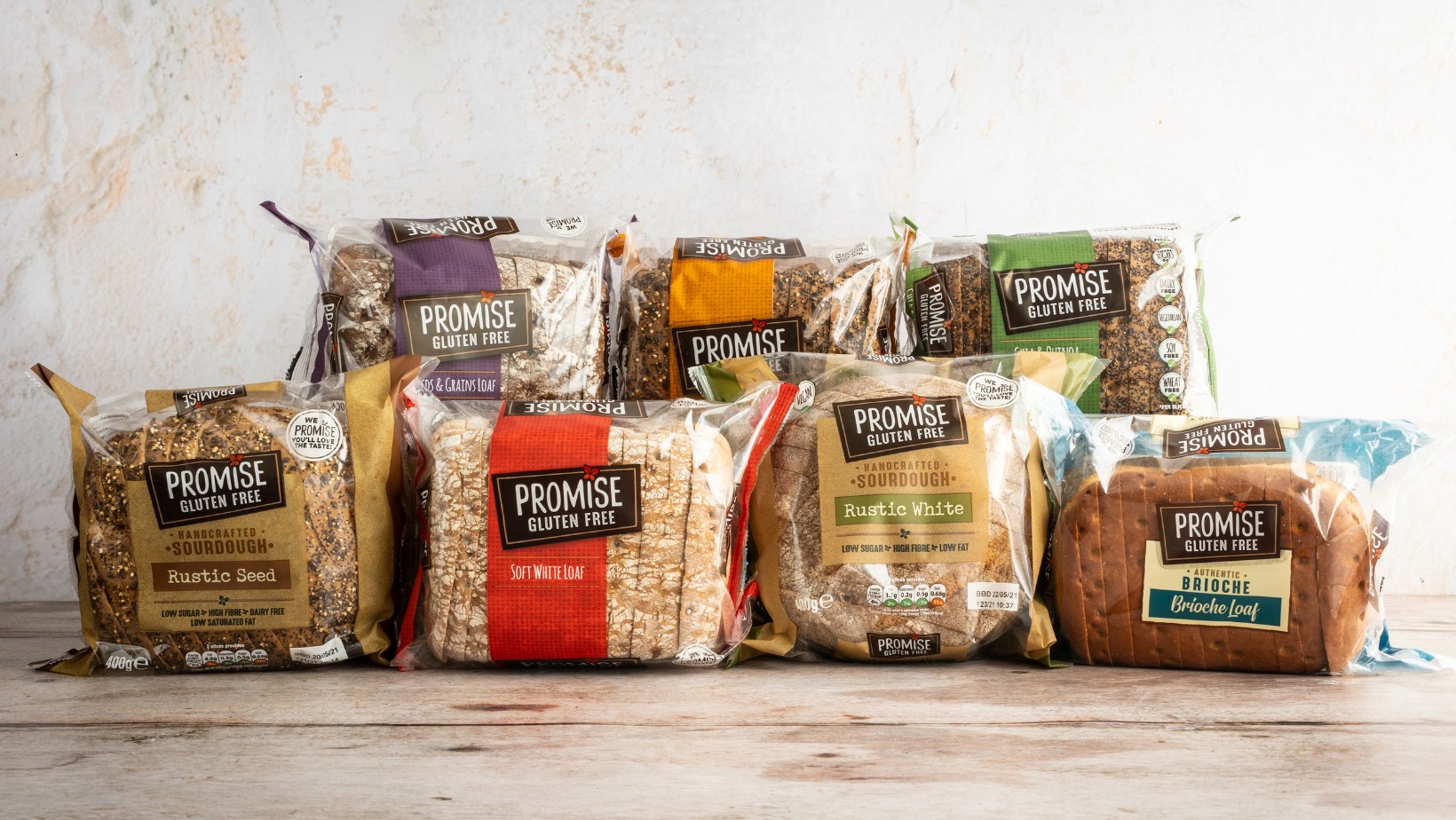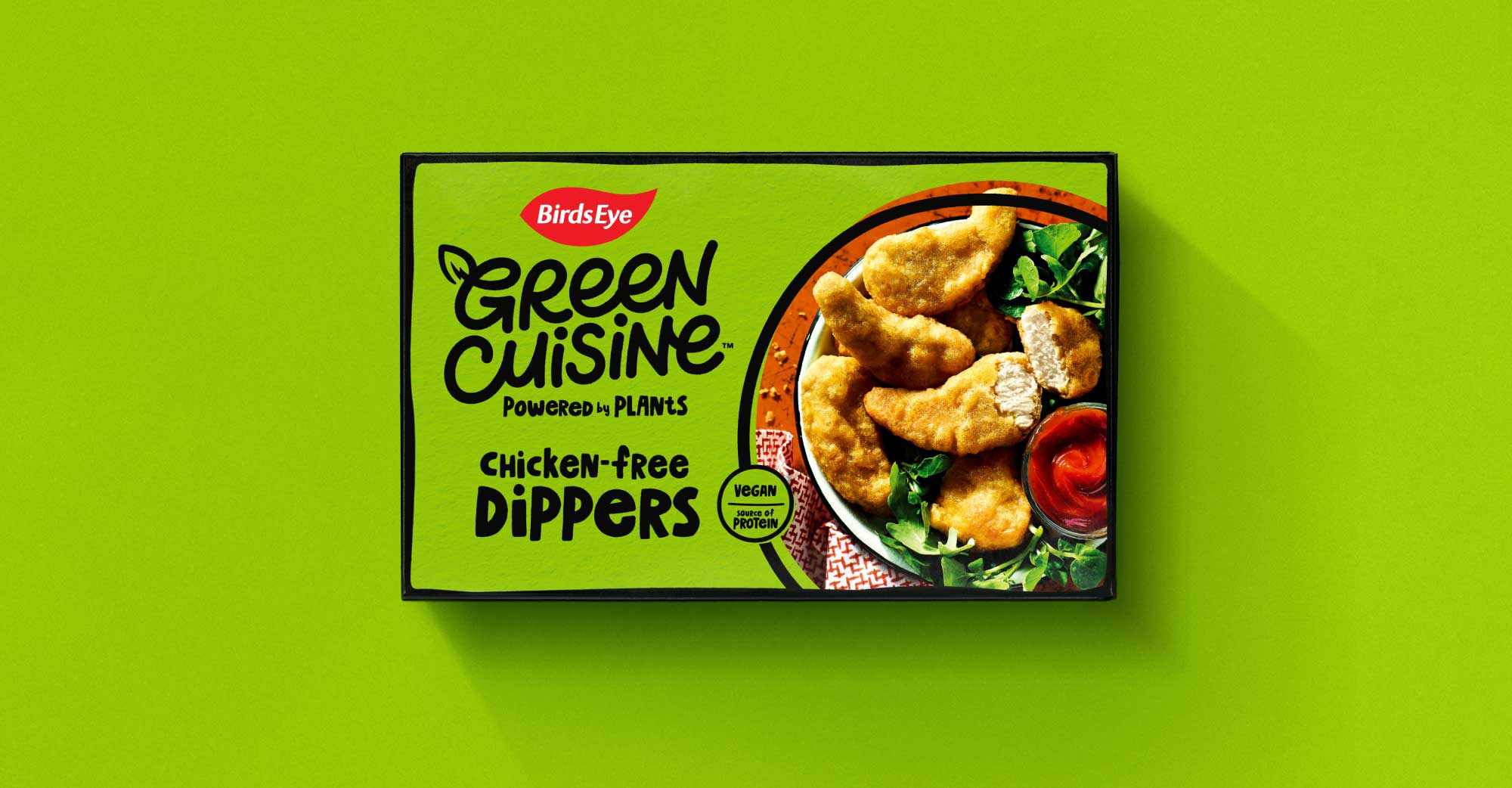
April 15, 2024
In Blogs

We are witnessing a pivotal moment in the global Health & Wellness and Food & Drink markets. Whilst Food & Drink categories have always heavily influenced people’s health, up until now, they have been treated separately from Health & Wellness. Only with the recent shift in consumer preferences towards healthier lifestyles have the two markets started to merge.
Consumers are increasingly taking a holistic approach to their health and wellbeing, spurring a growing demand for Food & Drink products to not only taste good but also offer nutritional benefits. Currently, the nutrition & weight loss sector, alone, is worth nearly $700 billion globally, while the wider Health & Wellness industry is valued at a staggering $5 trillion*. A plethora of possibilities await brands that can meet evolving consumer requirements. The question is how. From comprehensive market research to innovative new products, stand-out brand visuals and powerful omnichannel communications, winning in Health & Wellness requires great skills and strategy.
In this blog post, we’ll explore how businesses can grow their Food & Drink brands’ success amidst the Health & Wellness revolution — and why adapting to the needs of health-conscious consumers is fast becoming vital.
“Only through thorough market research can you establish exactly what your target consumers want and how you can adapt your brand’s offering in line with their priorities and preferences.”Like with any brand development project, reshaping your brand for the Health & Wellness market begins with understanding your existing customers and your target consumer groups. You need to build an in-depth insight into their psychographics, lifestyle choices, purchasing behaviours, and their attitudes towards your category.
It is also important to look into how shoppers/consumers currently view your brand in line with the rest of the category your products currently sit in and the category you are trying to enter, particularly from a health perspective. Here are just a few of the questions you should consider:
Only through thorough market research can you establish exactly what your target consumers want and how you can adapt your brand’s offering in line with their priorities and preferences. This knowledge will serve as the cornerstone for new product development (NPD) and decision-making.
“It’s critical to note that health-conscious consumers are unlikely to opt for your products if it means sacrificing their favourite tastes and flavours. Your new or improved offering needs to deliver on every level: taste, healthiness and the “feelgood factor.”Your research and insights will enable you to identify the key areas in which you can evolve your offering in line with the Health & Wellness market. Instead of focusing on yesterday’s favourite foods and drinks that miss the mark in the Health & Wellness market, brands can develop new products or reformulate existing products to reduce or remove unhealthy elements or incorporate natural, plant-based ingredients.
For example, you may have a yoghurt snack product that is delivering in terms of its competitive price point but is losing out on sales due to the perception of it being overly processed. In this case you might adapt your recipe to remove the artificial ingredients and additives and increase the natural fruit content. You may develop your offering further by reducing the fat or sugar and using only local, organic, sustainable ingredients.
It’s critical to note, though, that health-conscious consumers are unlikely to opt for your products if it means sacrificing their favourite tastes and flavours. Your new or improved offering needs to deliver on every level: taste, healthiness and the “feelgood factor”. Take Biomel, for example, whose probiotic shots and supplement shakes bring the full flavour of chocolate and salted caramel, yet are vegan, free from all allergens, and low on calories.
By adapting to consumer preferences and addressing their needs in this way, brands can strengthen their relevance and appeal in the Health & Wellness space. Moreover, consumers are often willing to pay a premium for products that align with their values and aspirations for a healthier lifestyle.

Food & Drink brands can expand their audience and increase their share of the Health & Wellness market by diversifying their product offerings to cater to a wider variety of dietary preferences and nutritional needs.
Consider, for example, introducing gluten-free, vegan, keto friendly, paleo, or low-carb options to appeal to consumers with dietary restrictions or preferences. These allergen and additive-free categories may have seemed a minority, but now, they are rocketing. This is largely due to the 18-24 year old consumer group, of whom around 30% report food allergies or intolerances in France, Germany, and the United Kingdom. In the United States, the number of 18-24 year olds reporting food allergies or intolerance climbs to 50%. Meanwhile, consumers without allergies or intolerances have begun to actively seek Free From products as well, due to the perceived health benefits.
“Allergen and additive-free categories may have seemed a minority, but now, they are rocketing. (…) There is ample opportunity for brands that want to target health-conscious shoppers with a plant-based range.”The substantial expansion of bakery brand Promise Gluten Free in 2023 stands as proof that the gluten free market is booming. In a matter of months, Promise won listings in major UK grocery stores Tesco and Morrisons, extended its product lines and category share in Sainsbury’s, and raised its sales by over 100%.
Equally, there is ample opportunity for brands that want to target health-conscious shoppers with a plant-based range. A recent 4-country survey has revealed that nearly half of the UK and US markets and over half of Germany and France now identify as Flexitarian, (eating plant-based food, with only occasional consumption of meat). What’s more, around 33% of the survey respondents called themselves “consumers of plant-based products” and another 15% expected to start consuming plant-based products in the next year.
In 2022, despite owning a successful frozen meat and sea food brand, Nomad Foods appreciated the need to place more investment in the plant-based area of their business. To stay ahead of the rising competition, Nomad Foods exponentially extended their Green Cuisine plant based product range to offer a vaster variety of chilled and frozen meat alternatives. With the ambition to double the success of the Green Cuisine brand, they also rejuvenated the brand’s positioning and packaging to draw more attention to the products’ selling points “vegan”, “powered by plants”, and “source of protein” and ensure every product stood out on the shelf with vibrant, green packaging. In this way, it is important to remember that to stay ahead in a competitive market, it isn’t enough for brands to extend their product range; they must also think strategically about their brand’s visual identity and packaging.

Transitioning your brand into the Health & Wellness market requires rejuvenating your brand positioning to reflect credibility, distinctiveness, and relevance to the target audience.
Your new positioning must align with the values, aspirations, and preferences of the consumer groups you are targeting. Importantly, you should communicate a clear and compelling brand story that resonates with the Health & Wellness market. This story should highlight the brand’s dedication to using natural, healthy ingredients and supporting sustainable practices.
Consumers have become more discerning than ever about what they eat and drink. Today, individuals are researching nutritional solutions, scrutinising food labels, and questioning ingredients before making purchase decisions. A recent McKinsey report found that 50% of consumers now list healthy eating as a top priority. With the surge in consumer understanding of how different ingredients affect the body and mind, this statistic is only set to rise, and Food & Drink brands that don’t evolve with it risk falling behind.
At the same time, there remains a significant consumer knowledge gap when it comes to the function and benefits of different nutrients and ingredients. And consumers are actively seeking brands that can help fill those gaps for them. So too are they looking for opportunities to make healthy and sustainable, yet affordable, food & drink choices. Brands that can provide advice and solutions in both areas will prove their commitment to healthy and progressive values while gaining an edge on the competition. This may include highlighting nutritional content, promoting functional ingredients, and showcasing endorsements or certifications from reputable health or ethical organisations.
For example, Nature’s Heart has capitalised on the demand for clean-label foods by developing nutritious snacks made with plant-based ingredients. With transparent packaging that proudly displays its products’ ethically-sourced, natural ingredients and nutritional benefits, Nature’s Heart has earned the trust of health-conscious consumers who crave transparency and authenticity in their food choices.
“The brands that stand apart from a credibility and trust perspective are those with the stamps of approval from Health & Wellness authorities.”Even if you change no ingredients or products in your portfolio, you can take a step towards the Health & Wellness market by drawing attention to the existing nutrients and health benefits that your Food & Drink products already provide, from “Source of Fibre” to “All natural ingredients” to “Low in salt and sugar” and “Contains Vitamin D”.
A prime example of how to do this well is the now thriving Swedish oat milk brand, Oatly, whose smart brand transformation repositioned their oat milk product range to target the plant-based market. Gone are their campaigns and design assets of the past that targeted solely the low cholesterol market. Now, the brand has exponentially expanded its market simply by highlighting the fact that it is plant-based, with a clear, human and humorous tagline: “Wow” No Cow!” As a result, Oatly has grown to become a superbrand valued at $10 billion in the New York IPO in 2021 and with a revenue of $800 million in September 2023.
The brands that stand apart from a credibility and trust perspective are those with the stamps of approval from Health & Wellness authorities that consumers increasingly look out for, such as the Vegan Society, USDA organic foods, Red Tractor, and Crossed Grain gluten free certificates. These locally and internationally recognised labels resonate well with consumers and bolster a brand’s credibility in not only the Food & Drink market but the Health & Wellness market, too.
“Cross-channel content and communication campaigns, including user focused content, social media and influencer marketing can all be powerful ways to raise awareness of your products’ healthy and sustainable selling points and build an authoratitave presence in the Health & Wellness market.”This goes hand in hand with adding nutritional cues to your product packaging and consumer communications. But it’s taking it a step further.
Cross-channel content and communication campaigns, including user focused content, social media and influencer marketing can all be powerful ways to raise awareness of your products’ healthy and sustainable selling points and build an authoratitave presence in the Health & Wellness market.
Nature’s Way. for example, has built an edge in the salad kit category through humorous brand positioning, vibrant packaging, and cross-channel communications that portray their “Fling” product range to be anything but boring. With the suggestive tag line “More than just a bit on the side”, playful product descriptions, and a suite of brightly-coloured omnichannel promotional assets, Fling draws consumers’ attention and breaks down common barriers to purchase.
A prime example of how to make waves in the Health & Wellness market through influencer marketing is recipe box service Hello Fresh’s partnership with UK celebrity and influencer, Stacey Solomon. The brand’s social media content and television adverts featuring videos and photos of Stacey have helped to significantly increase Hello Fresh’s following and sales. The brand has even launched a Stacey Solomon recipe range to drive sales among her fan base. Partnering with influencers is easier said than done, yet it can yield incredible results, particularly for brands looking to target specific niches. If you would like support with this, read more about how to identify and build authentic partnerships with influencers relevant for your brand here or get in touch to discuss how digital and creative marketing strategists can help you achieve your ambitions.
From capitalising on growing consumer interest in healthier lifestyles to building brand reputation and trust, huge benefits await Food & Drink brands that can adapt their offering successfully for the Health & Wellness market.
Yet it is an enormous challenge to take on for any in-house team alone, especially at the speed needed to keep up with shifting consumer preferences. It requires substantial market insight, a powerful, holistic strategy, and a complete brand repositioning. This should encompass everything from brand evaluation and redesign to strategic new product development, storytelling, and cross-channel marketing initiatives. With consumers seeming more speculative than ever of products with unfamiliar or artificial ingredients, Food & Drink brands must prioritise transparency and authenticity in their offering, aligning their values with those of their audience.
With 30 years of industry experience and insight and end-to-end brand management capabilities, Ceuta Group has empowered hundreds of brands to successfully penetrate the competitive Health & Wellness market and grow a strong, omnichannel presence, from transforming fruit brand Dole’s brand positioning to target the OTC market with its new range of immunity powders to expanding Promise Gluten Free’s share of the Free From category.
To find out more about how to unlock the true potential of your brand, get in touch.
Contact ushttps://www.who.int/news-room/fact-sheets/detail/ageing-and-health
https://www.precedenceresearch.com/health-and-wellness-market#:~:text=The%20global%20
Gray, D. (2023). The rise and rise of Enjoyable Wellness. [PDF]. 1HQ. (Accessed March 27, 2024).